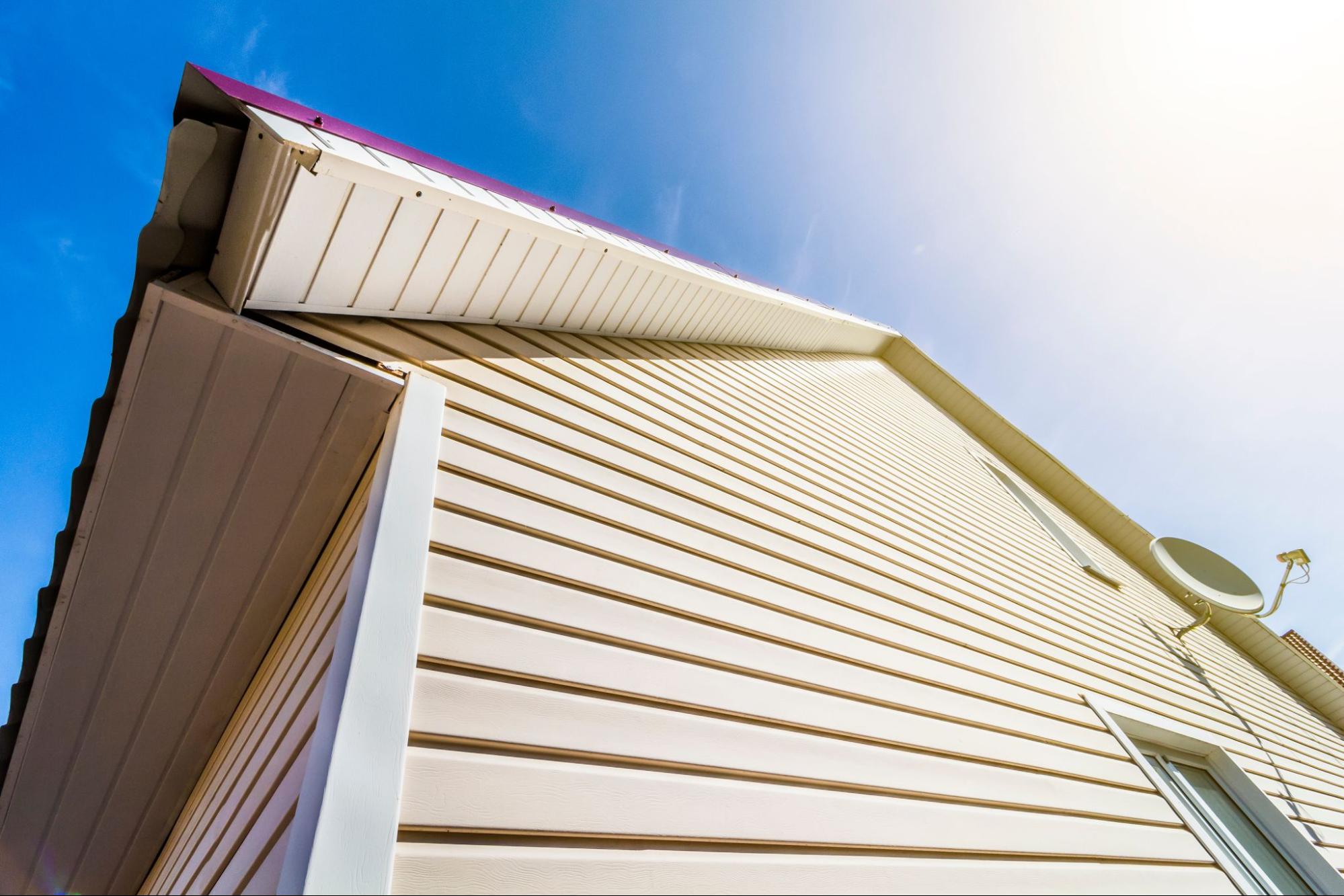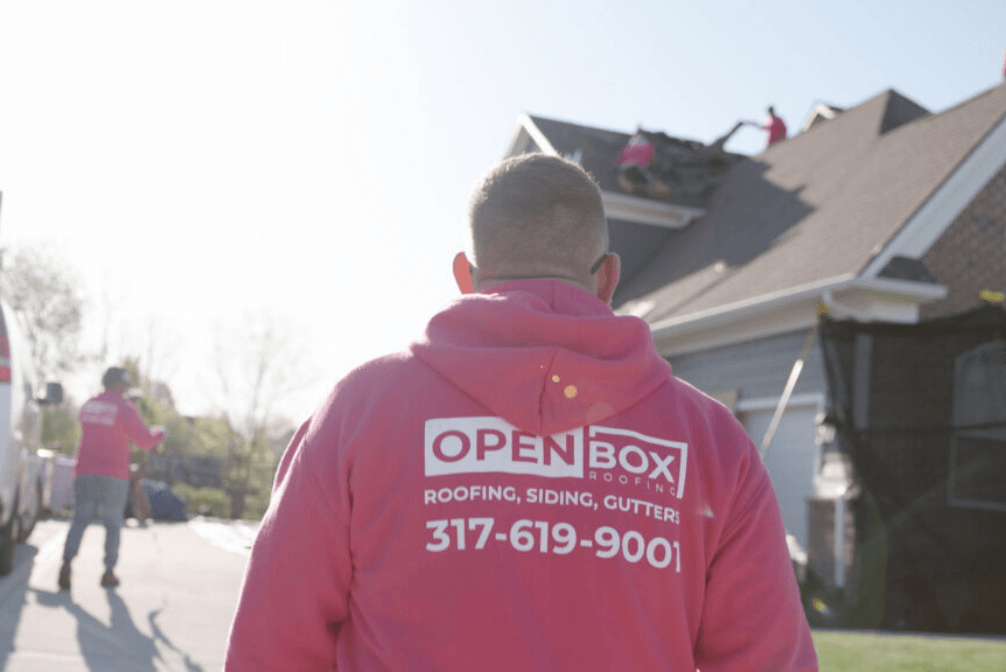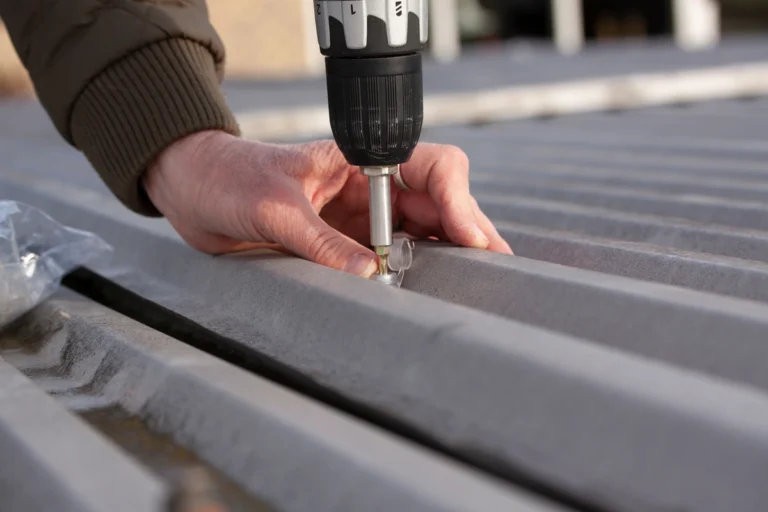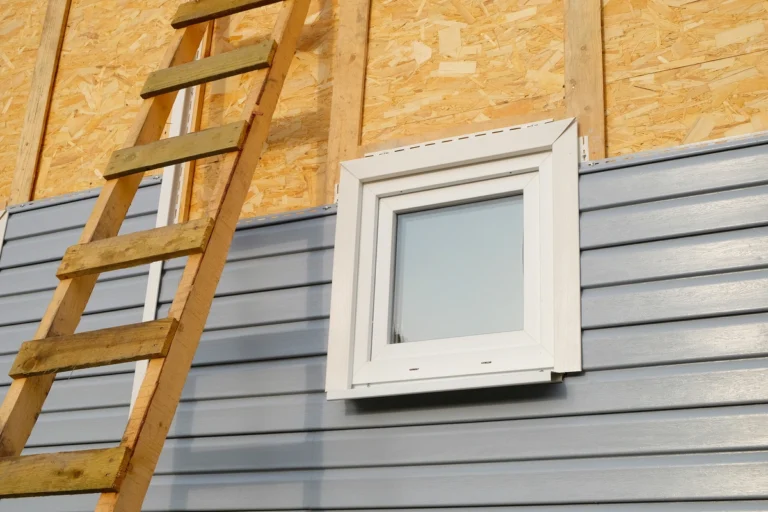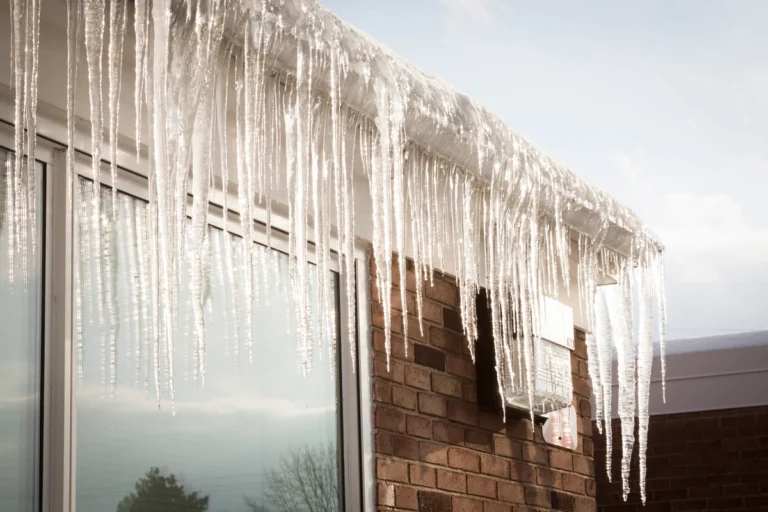When it comes to exterior siding options for your home, two popular choices often come to mind: Hardie board and vinyl siding. Both have their own unique features, advantages, and disadvantages, making the decision between them a crucial one for homeowners.
In this blog post, we’ll take your through:
- What Hardie board and vinyl siding are
- Their pros and cons
- A cost and longevity comparison
- Tips on choosing the right one for your home
- How to find a qualified contractor for your siding replacement project
Keep reading to get all the information on Hardie board vs. vinyl siding.
What is Hardie Board Siding?
Hardie board siding, also known as fiber cement siding, is a durable and versatile building material made from a combination of cement, sand, and cellulose fibers. Developed by James Hardie Industries, it’s known for its resilience against:
- Harsh weather conditions
- Fire resistance
- Low maintenance requirements
Hardie board siding comes in a variety of styles, textures, and colors, allowing homeowners to achieve the desired aesthetic for their homes, whether it’s a classic clapboard look or a more modern design.
What is Vinyl Siding?
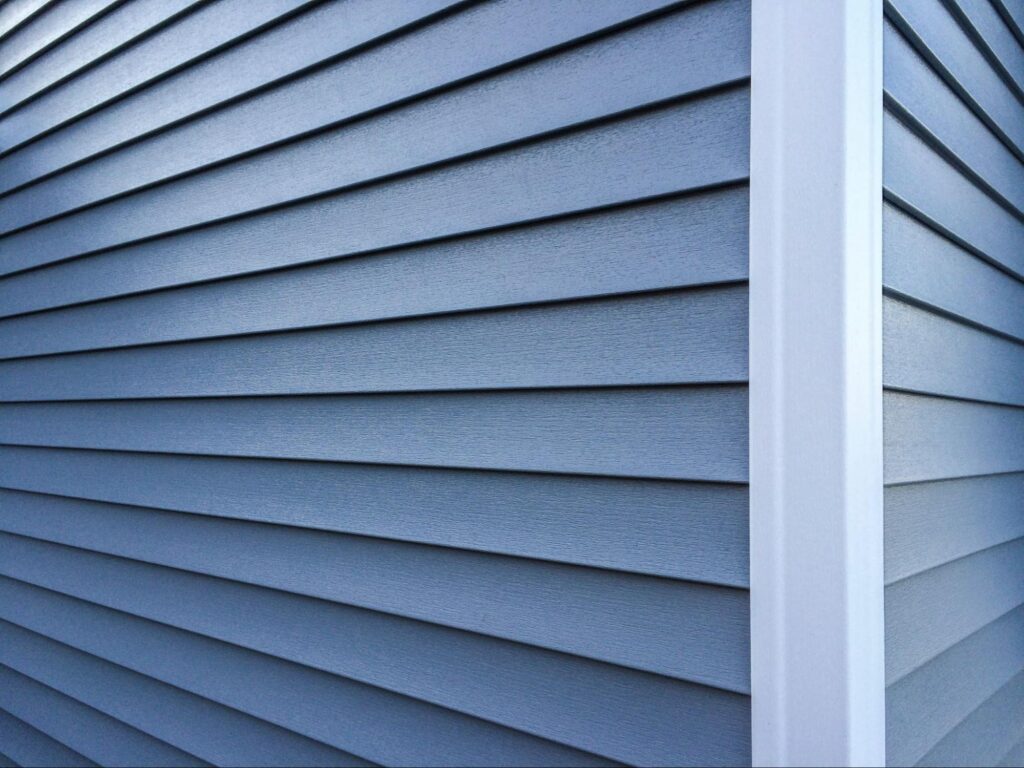
Vinyl siding is made from polyvinyl chloride (PVC) resin and is one of the most popular choices for residential siding due to its affordability and ease of installation. It typically comes in long panels that interlock horizontally, creating a seamless appearance. Vinyl siding is available in a wide range of colors and styles, including:
- Traditional clapboard
- Dutch lap
- Board and batten
This provides homeowners with ample options to suit their preferences.
Comparing Hardie Board vs. Vinyl Siding
When it comes to choosing the right siding materials for your home, it is important to weight all of the pros and cons.
✅ Pros of Hardie Board:
- Durability: Hardie board siding is highly durable and resistant to rot, insects, and harsh weather conditions, making it a long-lasting option for homeowners.
- Fire Resistance: Unlike vinyl siding, which is flammable, Hardie board siding offers excellent fire resistance, providing added safety and peace of mind.
- Aesthetic Versatility: With a variety of styles, textures, and colors available, Hardie board siding allows homeowners to achieve their desired aesthetic while maintaining durability and functionality.
❌ Cons of Hardie Board:
- Higher Cost: Hardie board siding tends to be more expensive upfront compared to vinyl siding, making it a significant investment for homeowners.
- Installation Complexity: Installing Hardie board siding requires specialized tools and expertise, which can increase installation costs and complexity compared to vinyl siding.
- Maintenance Requirements: While Hardie board siding is low maintenance compared to other materials like wood, it still requires periodic painting or resealing to maintain its appearance and protect against moisture damage.
👍 Pros of Vinyl Siding:
- Affordability: Vinyl siding is one of the most cost-effective siding options available, making it ideal for budget-conscious homeowners.
- Low Maintenance: Vinyl siding is virtually maintenance-free, requiring only occasional cleaning with soap and water to keep it looking its best.
- Easy Installation: Vinyl siding is lightweight and easy to install, reducing labor costs and installation time compared to other siding materials like Hardie board.
👎 Cons of Vinyl Siding:
- Susceptibility to Damage: While durable, vinyl siding can be susceptible to damage from impacts, extreme temperatures, and high winds, potentially requiring repairs or replacement.
- Limited Aesthetic Options: While there are many color and style options available for vinyl siding, it may not offer the same level of customization and authenticity as materials like Hardie board.
- Environmental Concerns: Vinyl siding is made from PVC, which raises environmental concerns due to its production process and potential for off-gassing.
Cost Comparison
In terms of upfront costs, vinyl siding is generally more affordable than Hardie board siding. On average, vinyl siding costs between $3 to $7 per square foot installed, whereas Hardie board siding typically ranges from $5 to $10 per square foot installed. However, it’s essential to consider long-term costs and factors such as maintenance, repairs, and longevity when comparing the overall value of each siding option.
Longevity Comparison
Both Hardie board and vinyl siding are durable materials designed to withstand the elements and provide long-lasting protection for your home.
Hardie board siding is known for its exceptional durability and can last upwards of 30 to 50 years with proper maintenance. On the other hand, vinyl siding typically has a shorter lifespan of around 20 to 30 years but requires minimal maintenance to keep it looking its best.
Ultimately, the longevity of your siding will depend on factors such as climate, maintenance practices, and exposure to environmental elements.
How to Choose the Right Siding for Your Home: 5 Considerations
When deciding between Hardie board and vinyl siding for your home, consider the following factors:
1) Budget:
Determine your budget and weigh the upfront costs of each siding option against long-term expenses such as maintenance and repairs.
2) Aesthetic Preferences:
Consider the architectural style of your home and choose a siding material that complements its design aesthetic and enhances curb appeal.
3) Climate and Environmental Factors:
Take into account your local climate, including temperature extremes, humidity levels, and exposure to wind and moisture, and choose a siding material that can withstand these conditions.
4) Maintenance Requirements:
Evaluate your willingness to invest time and effort into maintaining your siding, including tasks such as painting, cleaning, and repairs.
5) Warranty and Guarantees:
Research the warranties and guarantees offered by manufacturers for both Hardie board and vinyl siding to ensure you’re protected against defects and premature wear.
How to Find a Qualified Contractor for Your Siding Replacement
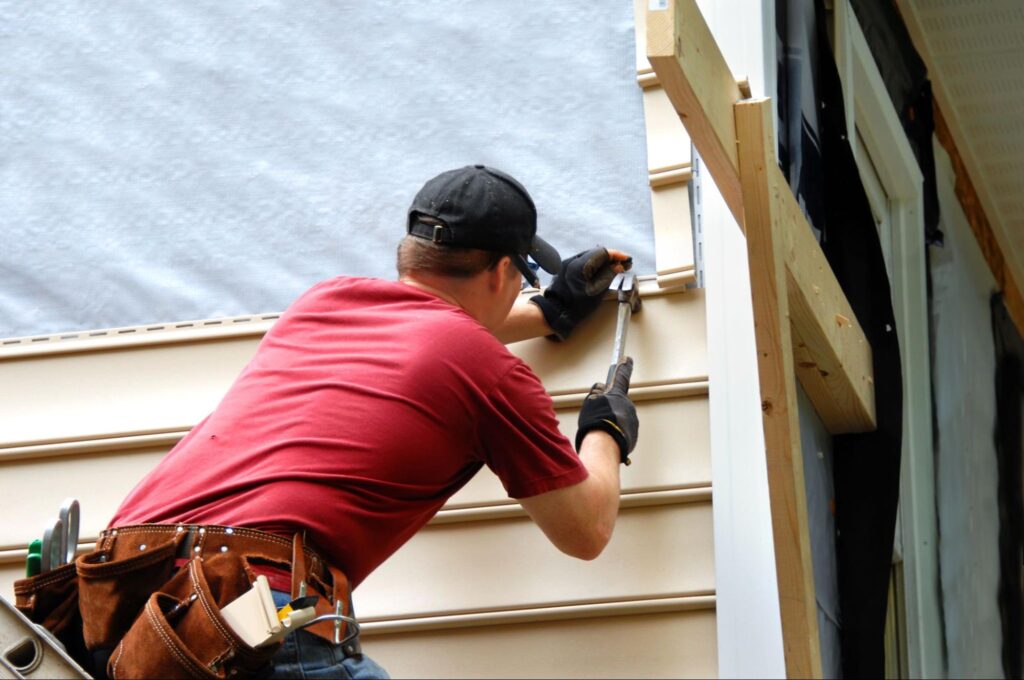
When hiring a contractor to install or replace your siding, follow these steps to find a qualified professional:
- Research Local Contractors: Look for reputable siding contractors in your area by asking for recommendations from friends, family, or neighbors, or by searching online directories and review websites.
- Check Credentials: Verify that the contractor is licensed, bonded, and insured to perform siding installation in your area and has experience working with the type of siding you’ve chosen.
- Request Multiple Quotes: Obtain written estimates from multiple contractors, comparing prices, services offered, and warranty coverage to ensure you’re getting the best value for your investment.
- Ask for References: Request references from past clients and follow up with them to inquire about their experience working with the contractor, the quality of the workmanship, and any issues encountered.
- Review Contracts Carefully: Before signing any contracts, carefully review the terms and conditions, including payment schedules, project timelines, and warranty details, and clarify any questions or concerns with the contractor.
Work With a James Hardie Siding Pro!
Both Hardie board and vinyl siding offer unique benefits and considerations for homeowners seeking to enhance the appearance, durability, and value of their homes. By weighing the pros and cons of each siding option, considering factors such as cost, longevity, and aesthetic preferences, and hiring a qualified contractor for installation, you can make an informed decision that meets your needs and exceeds your expectations for years to come.
Contact Open Box Roofing to get all the information you need to choose between fiber cement and vinyl siding.
